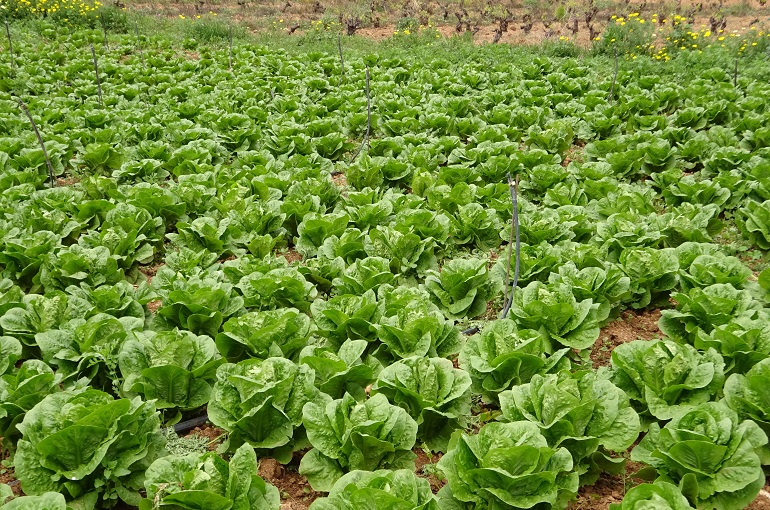- This topic is empty.
- AuthorPosts
- January 21, 2025 at 11:12 pm #542933

Lettuce, the popular leafy green vegetable, is a staple in salads and sandwiches, cherished for its refreshing taste and nutritional value.
As one of the easiest and most versatile crops to cultivate, lettuce has become a favorite among home gardeners and commercial farmers alike. But how exactly is lettuce farmed?
What goes into the process of growing those vibrant and crisp leaves? In this article, we’ll take a closer look at the art of lettuce farming.
1. Selecting the Right Variety
The first step in lettuce farming is selecting the appropriate lettuce variety to grow. With numerous types available, including romaine, iceberg, butterhead, and loose-leaf, each with its unique flavor and appearance, farmers must consider factors such as climate, soil type, and market demand when making their choice.
2. Preparing the Soil
Lettuce thrives in loose, well-draining soil that retains moisture while preventing waterlogged conditions. Before planting, the soil is carefully prepared by removing any debris, rocks, or weeds that could hinder lettuce growth.
Adding organic matter like compost can help improve soil fertility and structure, ensuring a healthy growing environment for the plants.
3. Planting the Seeds or Seedlings
Lettuce can be grown from either seeds or seedlings, depending on the farmer’s preference and the growing season. Directly sowing seeds into the ground is common, but some growers opt for starting seeds indoors and transplanting the seedlings later. The chosen method largely depends on the region’s climate and the time of year.
4. Watering and Irrigation
Consistent and appropriate watering is crucial for successful lettuce farming. Lettuce prefers cool and moist conditions, so farmers need to monitor soil moisture levels regularly.
Overhead sprinkler systems or drip irrigation are commonly used methods to deliver water efficiently to the plants without causing damage to delicate leaves.
5. Temperature and Sunlight
Lettuce is a cool-season crop and prefers temperatures between 45°F to 75°F (7°C to 24°C). Extreme heat can cause the lettuce to bolt, which means it prematurely goes to seed, resulting in bitter-tasting leaves.
To prevent this, farmers may use shade cloths or plant lettuce in areas that receive partial shade during hot summer months.
6. Fertilization
Proper fertilization is essential for lettuce growth. Before planting, incorporating balanced fertilizer into the soil can provide essential nutrients to support early development.
Additionally, farmers may use side-dressing techniques during the growing season to ensure the lettuce plants receive a continuous supply of nutrients.
7. Pest and Disease Management
Like any agricultural crop, lettuce is susceptible to pests and diseases. Common pests that plague lettuce farms include aphids, snails, slugs, and caterpillars.
Farmers may employ integrated pest management strategies, such as introducing beneficial insects or using organic pesticides, to keep pest populations under control.
Disease prevention measures, like crop rotation and maintaining proper plant spacing, can help minimize the risk of infections.
9. Harvesting
The harvesting time for lettuce varies based on the lettuce type and the desired maturity level. Loose-leaf varieties are often harvested at a young stage by cutting the outer leaves and allowing the plant to continue growing.
Head lettuces, on the other hand, are harvested when the heads are fully formed and firm. Proper timing is crucial, as leaving lettuce in the ground for too long may lead to bitterness or bolting.
10. Post-Harvest Handling
After harvest, lettuce is carefully washed, cooled, and packed for distribution. Maintaining the right temperature and humidity during transportation and storage ensures the lettuce stays fresh and crisp, reaching consumers in optimal condition.
Farming lettuce can be a rewarding endeavor, whether on a small scale for personal consumption or on a larger commercial level.
By selecting the right variety, preparing the soil, providing appropriate irrigation, and managing pests and diseases, farmers can enjoy a bountiful harvest of this nutritious and versatile leafy green. So, whether you’re a seasoned farmer or an aspiring gardener, consider adding lettuce to your planting list and relish the joy of cultivating this healthy and delicious vegetable.
- AuthorPosts
- You must be logged in to reply to this topic.

